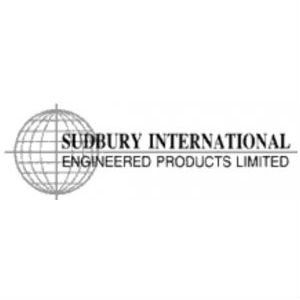 The six high-performance elements of Sudbury International expansion joints
The six high-performance elements of Sudbury International expansion joints
May 8, 2019 REDWIRE is news you can use from leading suppliers. Powered by FRASERS.
Posted by Sudbury International Engineered Products Limited
Expansion Joints, (fabric, metal, rubber, dog-bone), Automatic Recirculation Valves For Pumps, Specialty Sootblowers, Se... Read more
Subscribe
Free REDWIRE e-newsletter

Ducting expansion joints have many important parts.
Sudbury International Engineered Products Limited supplies non-metallic industrial expansion joints to the Canadian market. These joints have various components that contribute to the performance of flexible elements in important ways. The active length of the flexible element is a major consideration in the design of expansion joints, especially those used in ducts.
There are six important flexible-element major components that are considered highly when manufacturers design Sudbury International expansion joints.
Movements and system pressure
The flexible elements in Sudbury International non-metallic industrial expansion joints have a multi-layer construction in which each component plays a major role. These components are as follows:
- Active length. The portion of the flexible part of the joint that is free to move. When manufacturers design active length, they have to consider both movements and system pressure. The flexible element consists of a gas-seal membrane with optional insulating and support layers and flange reinforcement.
- Gas seal. The specific ply in non-metallic industrial expansion joints that is designed to stop gas penetration through the joint body. This seal should be designed to cope with the internal system pressure and resist chemical attack. Gas-seal flexibility is essential to handle ductwork movement. Sometimes, the gas seal may be complemented by a chemical barrier to improve chemical resistance.
- Outer cover. The ply exposed to the external environment, providing protection from it. Some outer covers may be combined with gas seals or act as secondary seals.
- Insulation. An insulation layer provides a thermal barrier to make sure the inside surface temperature of the gas seal does not exceed its maximum service temperature. Insulation can also help decrease and/or prevent condensate issues.
- Support layers. These keep the insulation in place and offer protection during handling and system operation. Using materials that can withstand system operating temperatures and chemical attack is essential to creating a successful design. Support layers can also help create arched or convoluted joint configurations when the application requires a specific shape.
- Flange reinforcement. An additional sheath of fabric to protect the joint from thermal and/or mechanical degradation.
For more information, contact Sudbury International.
Share
Posted by Sudbury International Engineered Products Limited
Expansion Joints, (fabric, metal, rubber, dog-bone), Automatic Recirculation Valves For Pumps, Specialty Sootblowers, Se... Read more
